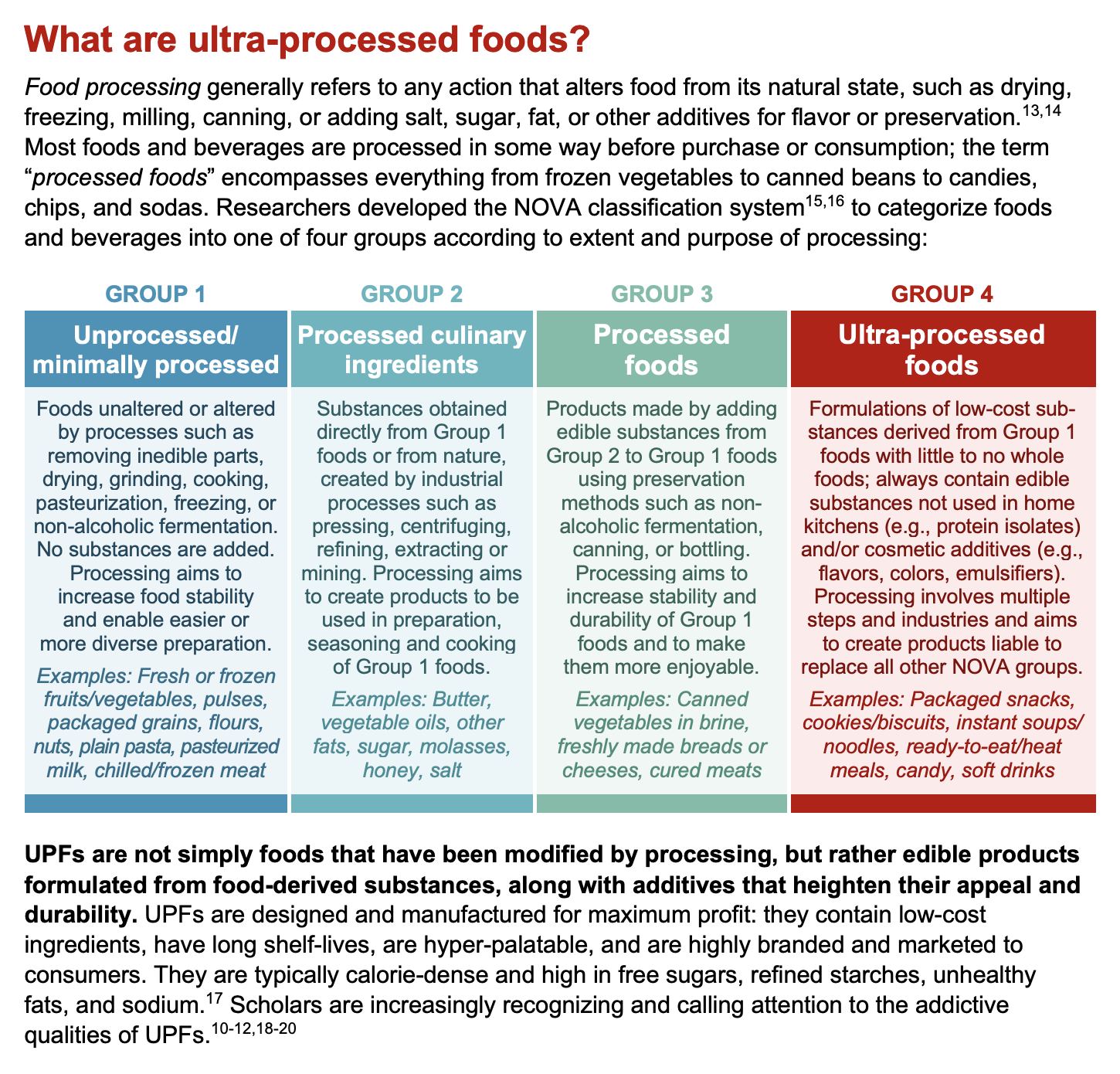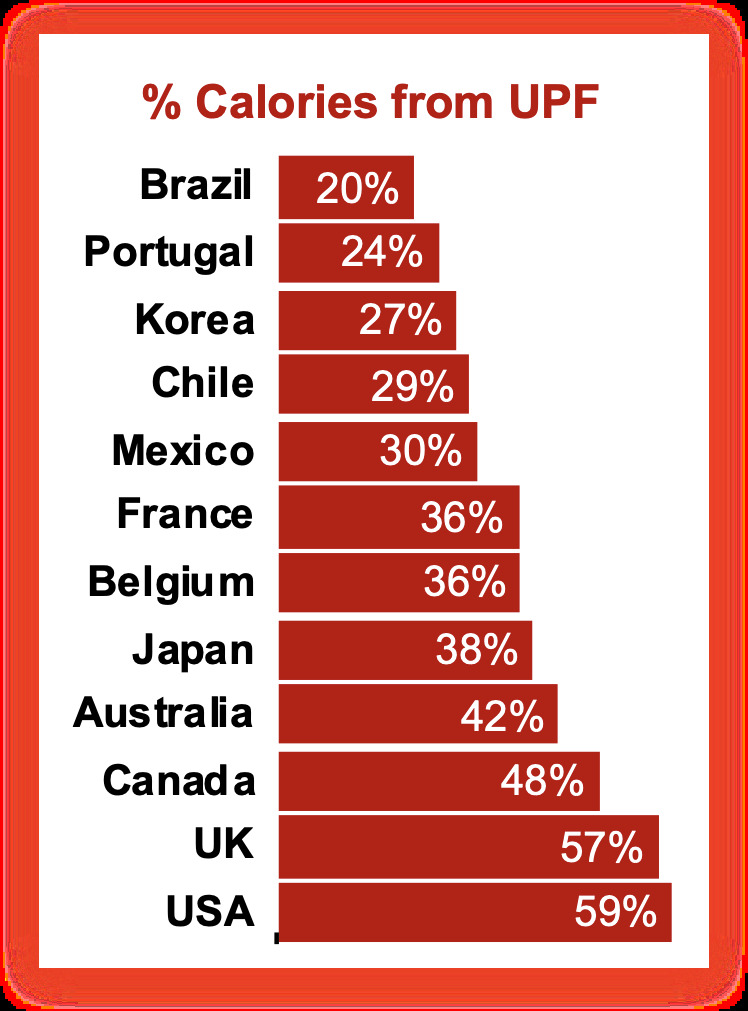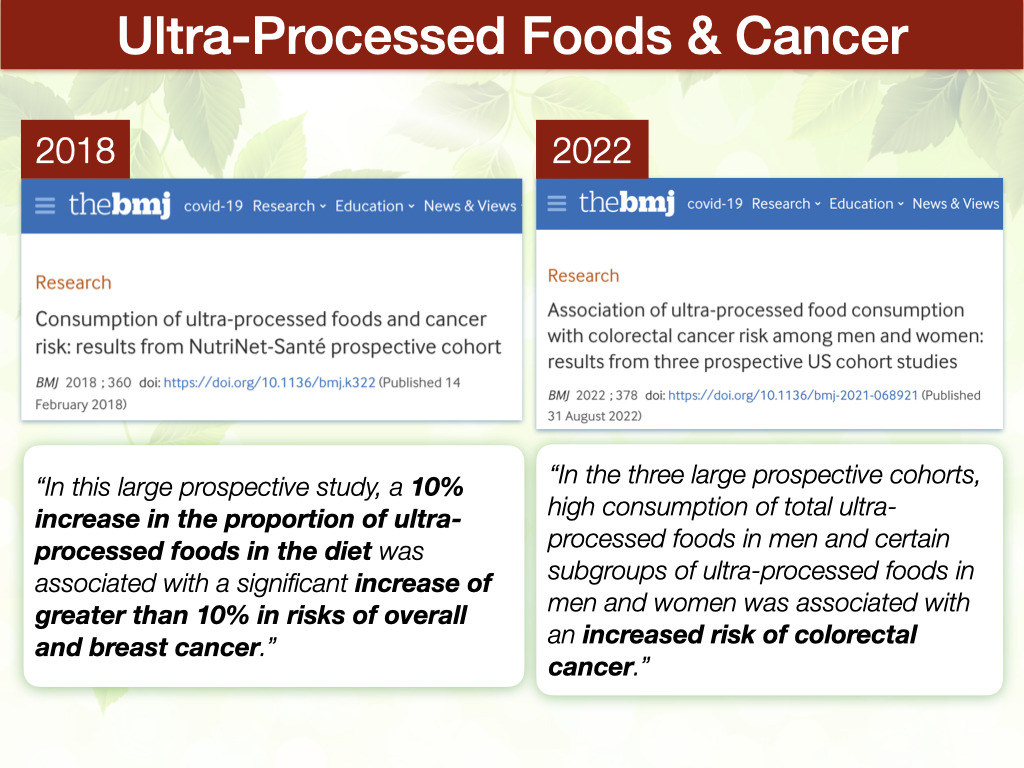Defined in this paper: Ultra-processed foods: what they are and how to identify them by Monteiro et al, Public Health Nutr. 2019 Apr;22(5):936-941.
The 4-page PDF on NOVA Classification Reference Sheet defines Ultra Processed Foods as follows:
Surprisingly, so many foods sold in colorful packages at a typical supermarket store happens to be an Ultra Processed Food! The 4-page PDF on NOVA Classification Reference Sheet has this list: Ultra Processed Foods may contain Food Additives (Wikipedia) like acidulents, acidity regulators, anticaking agents, antifoaming and foaming agents, antioxidants, bulking agents, food colorings, fortifying agents, color retention agents, emulsifiers, flavors, flavor enhancers, flour treatment agents, glazing agents, humectants, tracer gas, preservatives, stabilizers, sweeteners, thickeners and packaging! A lot of 'chemicals'!
Publication: (2021) Ultra-Processed Foods (UPFs): A Global Threat to Public Health published by Global Food Research Program, UNC Chapel Hill, is a 10-page PDF with 198 citations. Excerpts:

A lot! A 2016 research paper in BMJ showed that Ultra Processed Foods are nearly 58% of calories consumed in USA. What about other countries?

(9 mins) Transcript. Dr Greger's summary: "Adding a healthy option can actually drive people to make even worse choices, thanks to a mind-blowing glitch of human psychology."
(6 mins) Transcript. Dr Greger's summary: "What was the secret to the public health community's triumph when past attempts to regulate the food industry failed?"
(8 mins) Transcript. Dr Greger's summary: "What happened when ultra-processed foods were matched for calories, sugar, fat, and fiber content in the first randomized controlled trial?"
A few research papers linking UPFs to cancer have emerged:

(10 mins) by Dr Pam Popper.
(3 mins) CBS Morning News.

 Instagram
Instagram YouTube
YouTube